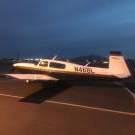Minnesota Crash
-
Members Online
- mhrivnak
- YuriE
- lanejacobs84
- MikeOH
- Niko182
- Txcowboy
- McMooney
- FoxMike
- 201er
- Andy95W
- Planegary
- M20S Driver
- Sabremech
- Ron McBride
- Rmnpilot
- Aerodon
- Alan Maurer
- Chuck Balogna
- LANCECASPER
- Peter T
- Hank
- Red Leader
- Shadrach
- Bunti
- Electro
- PeytonM
- hammdo
- woodwood304
- EricJ
- Mooney-Shiner
- rturbett
- Adam_StPete
- pkellercfii
- The Other Red Baron
- Joe Linnebur
- wombat
- M Terry
- Crawfish


Recommended Posts
Join the conversation
You can post now and register later. If you have an account, sign in now to post with your account.